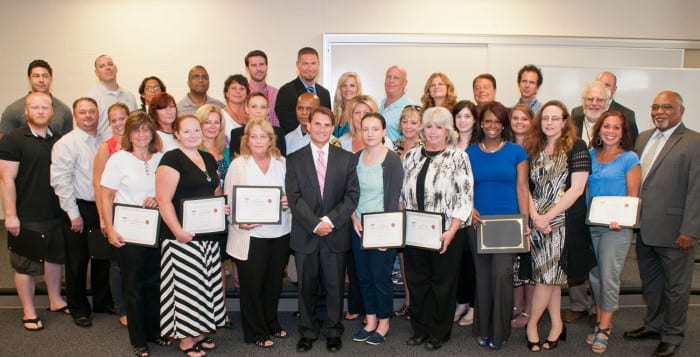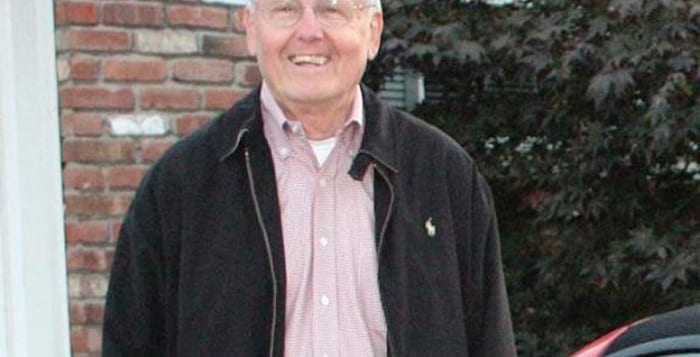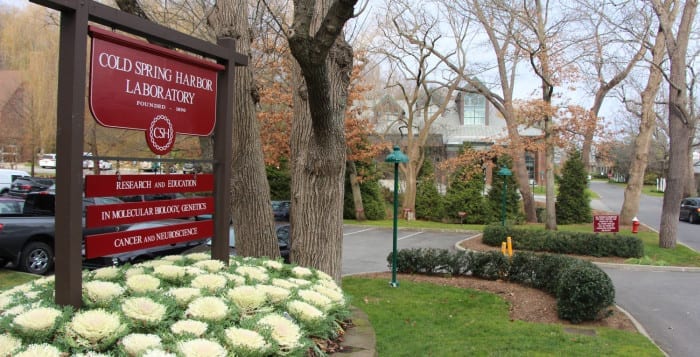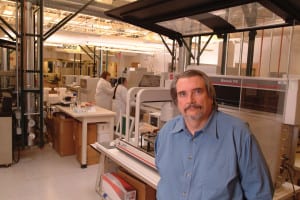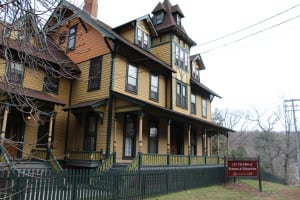By Clayton Collier
Suffolk County Sheriff Vincent DeMarco has worked diligently over the last nine years, going above and beyond what’s asked of his position.
His creation and development of the Youth Re-Entry Task Force, a program created to rehabilitate youth inmates, among his other initiatives, has earned him the distinction of a 2015 Times Beacon Record Newspapers Person of the Year.
“The sheriff has truly changed the culture of corrections in Suffolk County, and has put particular emphasis on rehabilitation of incarcerated youth,” said Kristin MacKay, director of public relations for the Suffolk County Sheriff’s Office. “He has been at the forefront of the fight to eliminate state mandates for new county jail construction, which saved the county’s taxpayers hundreds of millions of dollars.”
Though you wouldn’t know it from speaking with him, DeMarco did not initially intend to go into law enforcement. A Ronkonkoma native, DeMarco went to St. John’s University, graduating with a degree in economics in 1991.
“I always had an interest in law enforcement,” DeMarco said. “But I didn’t think it was going to be my career.”
After two years working in the financial industry in New York City, DeMarco transitioned into law enforcement, becoming a deputy sheriff for Suffolk County in 1994. He took to the job quickly.
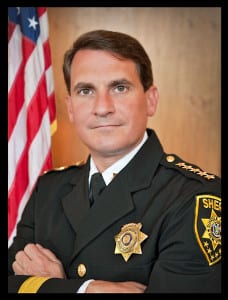
“I think I have the best job in the world, I really do,” he said. “I love coming to work every day. I love what I do.”
DeMarco became Suffolk County sheriff in 2006, the first uniformed member of the office to be elected sheriff, and one of the youngest sheriffs ever elected in Suffolk County. From the beginning of his tenure, DeMarco said he has made working with youth inmates a priority. In 2011, DeMarco began assembling the partners needed for an undertaking like the Youth Re-Entry Task Force.
“We needed partners on the outside in order to make this a success,” DeMarco said. “We needed housing. … We also had to find not-for-profits that were willing to come into the correctional facilities and do some counseling: drug counseling, anger management, life skill counseling, vocational counseling, all types of stuff to fill our program, so when they leave the facilities they actually have the tools to succeed instead of just warehousing them in a correctional facility where you’re not giving them any tools and they’re going to fail.”
Among the most essential resources DeMarco and his administration found was housing for youths at Hope House Ministries in Port Jefferson and Timothy Hill Children’s Ranch in Riverhead.
Thaddaeus Hill, executive director of Timothy Hill Children’s Ranch — created and named in memory of his older brother — said the program has seen great success, highlighted by the 50 percent drop in recidivism among youths who go through.
“Sheriff DeMarco has pioneered programs that few in this country have had the courage to take on,” Hill said. “He looks at the big picture beyond the walls of his jail and that has allowed him to make a significant impact on the lives of many young people on Long Island.”
Another key component was Eastern Suffolk BOCES to incorporate education into the program. Barbara Egloff, divisional administrator for Eastern Suffolk BOCES and Oversight of the Jail Education Program and Career, Technical and Adult Education, said DeMarco has effectively used the strengths of all of his partnerships to make the program a success.
“It is inspiring to work with Sheriff DeMarco,” Egloff said. “He has instilled the importance of effective collaboration to all who have the opportunity to work with him.”
Suffolk County Court Judge Fernando Camacho, who heads the County’s Felony Youth Part, a program created in conjunction with Sheriff DeMarco, said it is rare to come across a sheriff so dedicated to creating better lives for his inmates after they have served their time.
“I’ve worked in criminal justice my entire professional career, over 30 years, and I’ve worked with a lot of individuals running correctional facilities, and I can honestly say I’ve run across somebody who’s actually bringing in social workers and service providers into his jail to help young people to identify what the issues are, and to try to come up with solutions,” Camacho said.
Camacho said it is important to work with youth inmates to improve their situations upon leaving the jail.
“Rather than putting them upstate for three years and forgetting about them, we’re actually thinking about it in a different way,” Camacho said. “Let’s see if we can figure out why this kid got in trouble, and let’s see if we can put a plan in place that’s going to give this kid an opportunity to break out of the cycle and get back on track.”
As DeMarco explains, the program’s numbers speak for themselves.
“Nationally, the average inmate has an 83 percent chance of returning,” DeMarco said. “The kids that come through our program have a 23 percent chance of coming back; that’s a big difference.”
Overall, the program contributes to lowering the number of inmates in county jails, allowing DeMarco to prevent the costly undertaking of additional facilities.
“It doesn’t cost us any more to provide these services to the youth in this facility, but the return we get is that they don’t come back to the facility and we lower the jail population.”
In the future, DeMarco hopes to expand for additional age groups. The more people he can help, he said, the better.
“If someone winds up touching the criminal justice system and they wind up in this facility, and we can find out the underlying reason why this crime was committed,” he said, “we can change that and change their behavior when they get out, we’ve increased public safety, and that’s the goal.”

